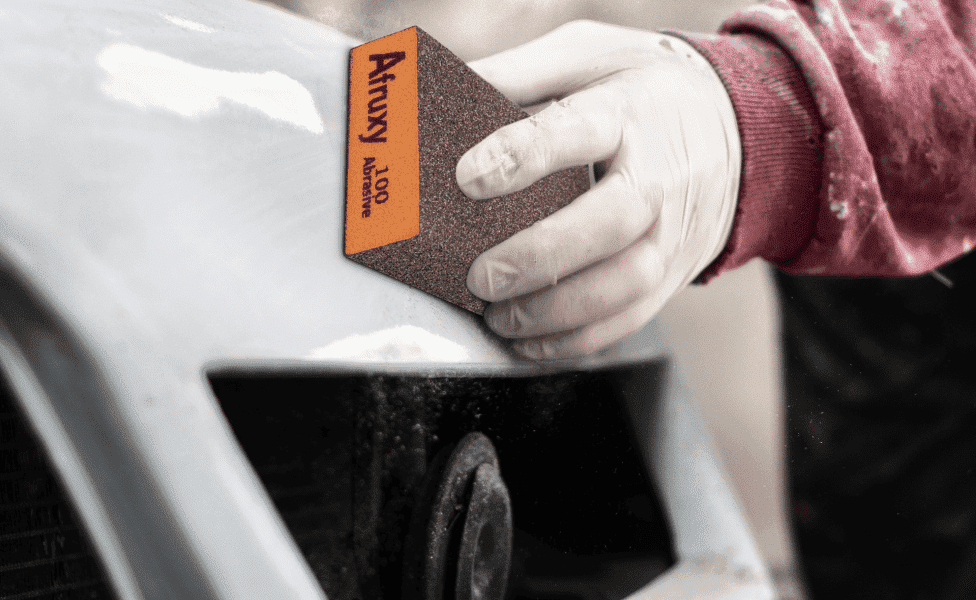Sanding Drywall with a Sponge is an essential step in the manner of ending and portraying it. However, it can additionally be a messy and time-consuming task. One way to make the technique simpler and extra environmentally friendly is with the aid of the usage of a sanding sponge. Drywall, additionally recognised as gypsum board or plasterboard, is a frequent constructing fabric used in construction. It is made of gypsum, a smooth sulfate mineral, that is pressed between two sheets of heavy paper or fibreglass. In this guide, we will talk about the pleasant practices for sanding drywall with a sponge, which includes suitable techniques, equipment, and protection measures.
Best Technique for Sanding Drywall with a Sponge
- The Right GritThe first step in sanding drywall with a sponge is to choose the right grit. The grit refers to the size of the abrasive particles on the sponge. A higher grit number means smaller particles and a smoother finish. For drywall, a medium-grit sponge (such as 120 or 150) is suitable for most applications.
-
How to hold sanding sponge
Next, it is important to hold the sponge correctly. Hold the sponge with both hands, using your dominant hand to guide it and your other hand to apply pressure. Move the sponge in a circular motion, working in small sections at a time. It is better to move the sponge in a circular motion rather than back and forth. This can make the sanding process up to 30% faster.
-
Avoiding Dust
Avoid creating dust while sanding drywall by wetting the sponge before use. This will not only reduce the amount of dust but also help the sponge last longer. You can also use a vacuum attachment on your drywall sander to remove the dust as you work.
-
Sanding Corners
When sanding corners, use the edge of the sponge to get into tight spaces. And if you are working on a textured drywall, use a light touch and be careful not to remove too much of the texture.
Safety Measures
It’s important to take proper safety measures when sanding drywall. According to the study “Health hazards of drywall dust” (American Journal of Industrial Medicine, 2010), the dust created by sanding drywall can be harmful to your lungs if inhaled. To minimize the risk of inhaling dust, wear a dust mask or respirator. It’s also recommended to wear safety goggles or glasses to protect your eyes from dust and debris. Make sure the room you are sanding is well-ventilated, by open windows or using a fan.
Repair and Painting
After sanding drywall, it is important to repair any uneven surfaces or holes. You can use joint compound or spackling to fill in any gaps or imperfections. Allow the compound to dry completely before sanding again.
Finally, the last step is to paint the drywall. Using a paint roller or brush, apply paint in thin, even coats. Allow the paint to dry completely before applying a second coat.
Conclusion
Sanding drywall with a sponge is an efficient and easy way to prepare the surface for painting. By following the proper technique, equipment, and safety measures, you can achieve a smooth and even finish. Remember to choose the right grit, hold the sponge correctly, avoid creating dust, and take proper safety measures. And if there are any imperfections repair them with a joint compound and paint them. To know more about what is sanding sponge read here.
Upgrade your drywall finishing process with our high-quality sanding sponges. Order yours now and achieve a smooth and even surface with ease!
Key Points to Follow |
|---|
| Choose the right grit sanding sponge for your project |
| Hold the sponge correctly with both hands, using your dominant hand to guide it and your other hand to apply pressure |
| Wet the sponge before use to reduce the amount of dust and extend the life of the sponge |
| Use a vacuum attachment on your drywall sander to remove dust as you work |
| Use the edge of the sponge to sand the corners |
| Use a light touch when sanding textured drywall to avoid removing too much of the texture |
| Wear a dust mask or respirator, safety goggles or glasses to protect your eyes from dust and debris |
| Keep the room well-ventilated during sanding |
| Repair any uneven surfaces or holes with joint compound or spackling |
| Apply the paint in thin, even coats and allow it to dry completely before applying a second coat |
| It’s also important to keep in mind that you should use wet sanding drywall to avoid dust and have a better finish |



